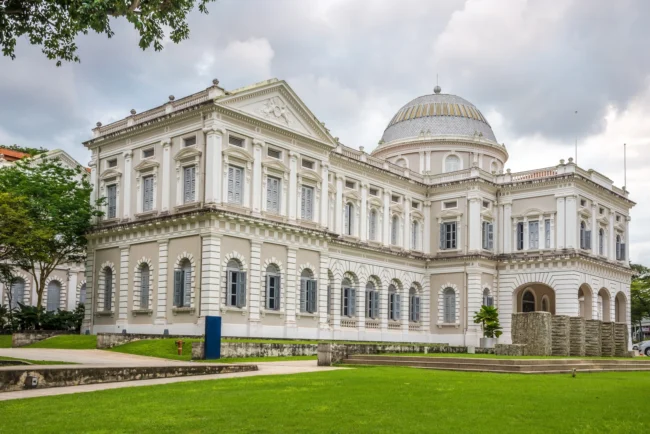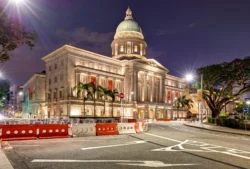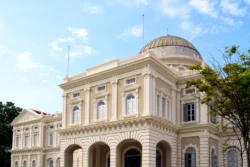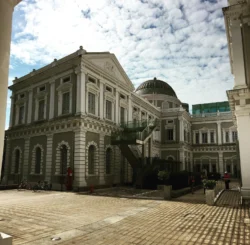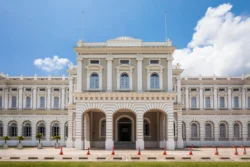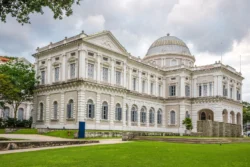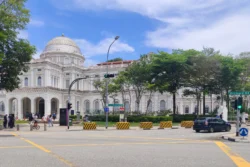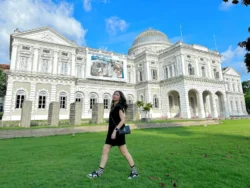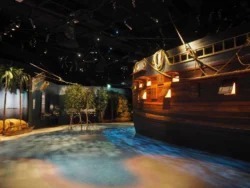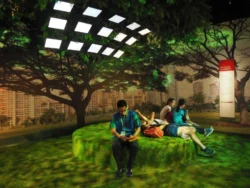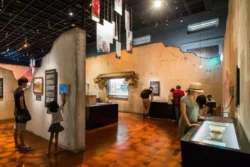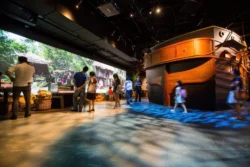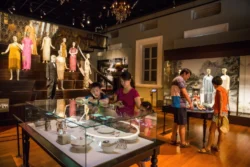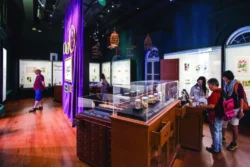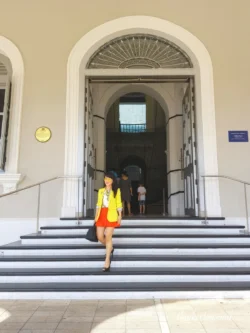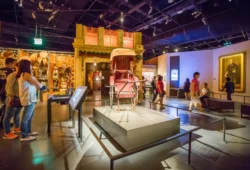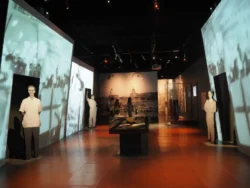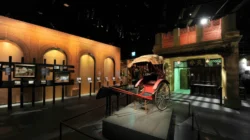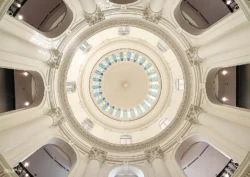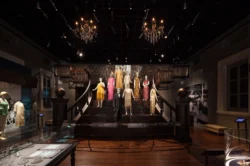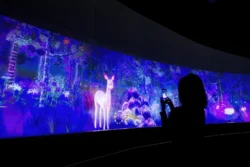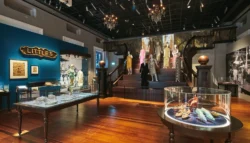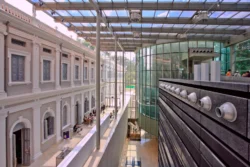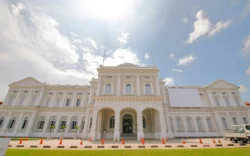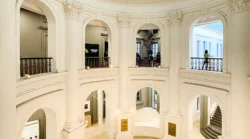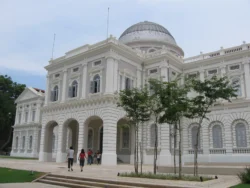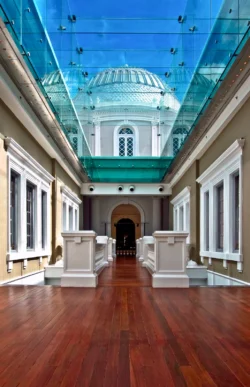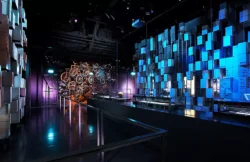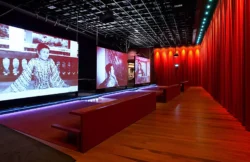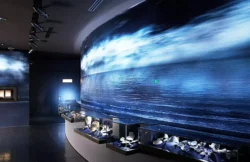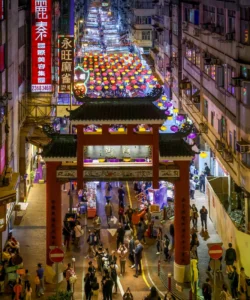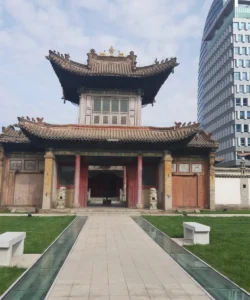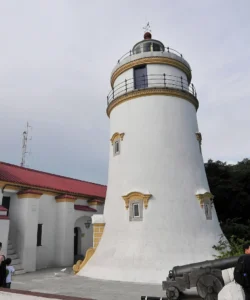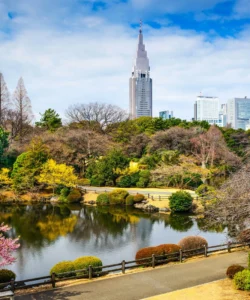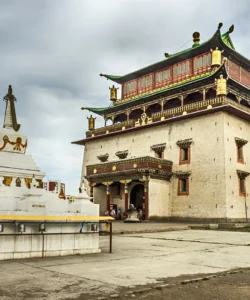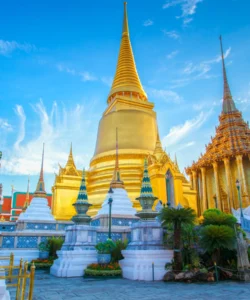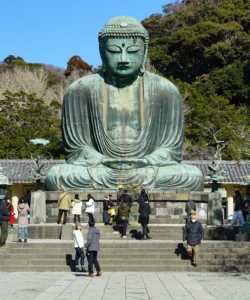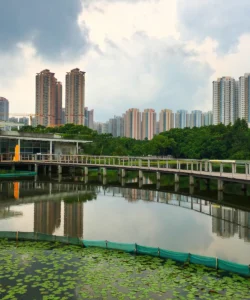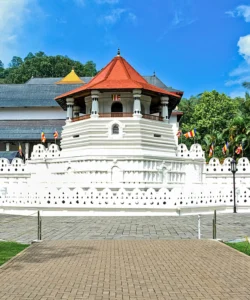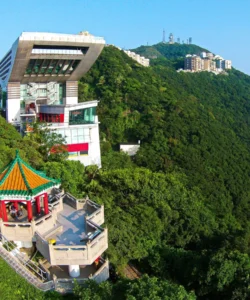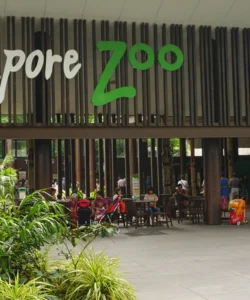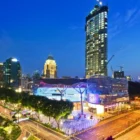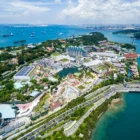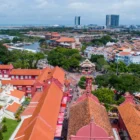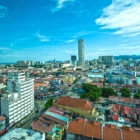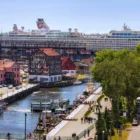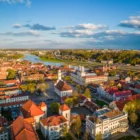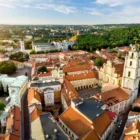The National Museum of Singapore is the oldest museum in Singapore, tracing its origins back to 1849. It is a venerable institution dedicated to telling the compelling story of Singapore’s rich history and diverse culture, presenting its narratives through innovative and immersive exhibitions.
Name: National Museum of Singapore
Address: 93 Stamford Road, Singapore 178897.
It is centrally located in the Downtown Core area, adjacent to Fort Canning Hill and in close proximity to other significant landmarks and cultural institutions.
How to Get There:
The National Museum of Singapore is very well-connected by Singapore’s efficient public transportation system:
- By MRT (Mass Rapid Transit):
- The nearest MRT station is Bras Basah Station (CC2) on the Circle Line, just a 4-minute walk away.
- Other nearby stations within walking distance include Bencoolen (DT21) on the Downtown Line (approx. 7-10 minutes), Dhoby Ghaut (NS24/NE6/CC1), and City Hall (EW13/NS25).
- By Bus: Numerous public bus routes stop directly outside or very close to the museum. The closest bus stop is SMU (Singapore Management University), a 2-minute walk away. Other nearby stops include YMCA and Stamford Road.
- By Taxi/Ride-Sharing (Grab, Gojek, Tada): Easily available throughout Singapore for a direct drop-off.
- By Car: Accessible via major roads. Paid parking is available at the museum, and nearby alternative parking includes YMCA, Fort Canning Park, and SMU.
Landscape and Architecture:
The National Museum of Singapore is an architectural masterpiece, seamlessly blending its original 19th-century colonial grandeur with a striking modern extension.
- Neo-Palladian Original Building: The museum’s iconic original building, designed by Colonial Engineer Henry Edward McCallum and opened in 1887, features an elegant Neo-Palladian architectural style. This European-inspired design is characterized by its symmetrical façade, the use of pediments above windows, and prominent pilasters and columns (Doric, Ionic, and ornate Corinthian orders).
- Grand Rotunda and Dome: Stepping inside the main entrance, visitors are greeted by a magnificent grand rotunda crowned by a majestic dome, rising to a height of 27 meters. Natural light floods in through beautifully restored Victorian stained glass panels with floral and grid motifs, creating a captivating visual effect. The dome is covered with 3,000 zinc fish-scaled tiles.
- Modern Glass Extension: A significant redevelopment from 2003-2006 saw the addition of a new modernist extension of glass and metal. This contemporary wing is linked to the original colonial building by a dramatic Glass Passage. Rising almost 11 meters off the floor, this self-supporting glass structure acts as a metaphorical bridge between Singapore’s past and present, deliberately designed to blend seamlessly with the neo-Palladian facade rather than overshadow it.
- Glass Rotunda: The modern extension also features a Glass Rotunda, a smaller steel mesh drum encapsulated by a larger glass façade drum, which has hosted immersive digital art installations.
- Gallery Theatre: The museum also includes a modern Gallery Theatre, uniquely incorporating 16,720 red bricks salvaged from the demolished National Library of Singapore, laid out in a herringbone pattern as a tribute.
- Surrounding Greenery: The museum is set within the lush greenery of the surrounding area, close to Fort Canning Park, providing a serene backdrop for its imposing structure.
What Makes It Famous:
- Oldest Museum in Singapore: It is the oldest and one of the most prominent museums in Singapore, holding a significant place in the nation’s heritage. Its history dates back to 1849.
- National Monument: The museum building itself was designated a National Monument of Singapore in 1992, recognizing its architectural and historical importance.
- Comprehensive Singapore History: The museum is renowned for its in-depth exploration of Singapore’s social history, from its earliest beginnings in the 14th century to its modern-day development as a vibrant global city-state. Its Singapore History Gallery is a highlight, offering a multi-perspective and engaging narrative.
- Innovative and Immersive Exhibitions: The National Museum is known for adopting cutting-edge and creative ways to present history and culture. It frequently hosts innovative festivals, visually arresting art installations (such as the former “Story of the Forest” by teamLab in the Glass Rotunda), performances, and film screenings, redefining the conventional museum experience.
- Architectural Blend of Old and New: Its striking architectural design, where a beautifully restored 19th-century colonial building seamlessly integrates with a sleek, modern glass extension, is a famous aspect of the museum, symbolizing Singapore’s journey from its colonial past to its futuristic present.
- Significant Artefacts: The museum houses important artefacts that tell Singapore’s story, including the Singapore Stone (with 13th-century inscriptions) and various items from different periods of the nation’s development.
- Engaging for All Ages: It actively curates programs, workshops, and exhibitions designed to be engaging and educational for families and children of all ages, making history accessible and fun.
Differences from Some Other Wonders:
- Focus on National History and Identity: While other Singaporean attractions celebrate diverse aspects (Changi Airport’s aviation excellence, Gardens by the Bay’s biophilic design, Sentosa’s leisure, Marina Bay Sands’ integrated luxury), the National Museum of Singapore’s unique core purpose is to comprehensively tell the story of Singapore itself – its history, culture, and national identity. It serves as a collective memory for the nation.
- Hybrid Architecture (Colonial + Modern): Unlike purely modern structures (Petronas Towers, Singapore Flyer, MBS) or fully preserved historical sites (Malacca City’s Stadthuys), the National Museum’s seamless fusion of a grand 19th-century Neo-Palladian building with a contemporary glass extension is a distinct architectural signature, representing a dialogue between past and present.
- Narrative-Driven Exhibitions: While other museums might focus on specific art forms (Islamic Arts Museum Malaysia) or cultural groups (Peranakan Museum), the National Museum of Singapore’s strength lies in its narrative-driven approach to history, using artefacts and multimedia to craft a compelling “Singapore Story” that spans centuries and explores various facets of daily life, challenges, and triumphs.
- Emphasis on “Living” History: The museum strives to make history relevant and accessible, often through interactive exhibits, digital installations, and events that bring historical periods to life, moving beyond static displays.
- Located within Civic District: Its placement within Singapore’s historic Civic District, surrounded by other colonial-era buildings and cultural institutions, enhances its historical context and makes it part of a broader heritage walk, distinct from attractions in newer or more remote areas.
